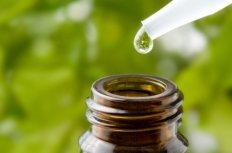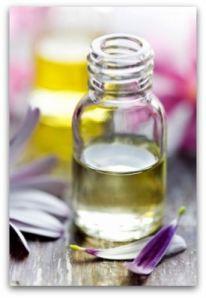 As Robin Lander from Simpler’s Botanicals states, “Creating your own fragrances is a playful art, requiring little more than intuition, imagination, a passion for aroma, and attention to a few simple guidelines. There are no absolute rules as to which oils blend well together, so feel free to experiment! But remember, your blend will be greatly enhanced by using the highest quality pure plant essential oils you can find.”
As Robin Lander from Simpler’s Botanicals states, “Creating your own fragrances is a playful art, requiring little more than intuition, imagination, a passion for aroma, and attention to a few simple guidelines. There are no absolute rules as to which oils blend well together, so feel free to experiment! But remember, your blend will be greatly enhanced by using the highest quality pure plant essential oils you can find.”
I couldn’t agree more, but one thing to keep in mind before even beginning your perfume playtime is to always, always dilute your essential oils before using them in a blend. Essential oils are super concentrated substances, and most don’t even have a beautiful aroma right out of the bottle. Most will open up and become the beautiful scents they are ONLY when highly diluted. I like to use either jojoba, or fractionated coconut oil as they both have little to no scent, and help the essential oil last longer.
Take jasmine, for instance; a popular essential oil in many perfumes. Jasmine in it’s purely concentrated form is highly floral to a point that it’s almost cloying, while putting off a dizzying and narcotic act upon the nervous system in that form, and will only give up it’s beautiful melange of notes after it is highly diluted. Same goes for rose, neroli, and most other essential oils you might want to use in a perfume blend.
From: PERFUMES AND COSMETICS
BY GEORGE WILLIAM ASKINSON, Fifth Edition, 1923Perfumes or scents, however, exert not only an agreeable impression on the olfactory organ, but their effect extends to the entire nervous system, which they stimulate; when used in excess, they are apt to cause headache in sensitive persons; the laborers in the chemical factories where these substances are produced on a large scale, occasionally even suffer by reason of their stimulating action on the nerves.
For this reason perfumes should never be employed otherwise than in a very dilute condition; this necessity arises from a peculiarity of the odorous substances which when concentrated and pure have by no means pleasant smell and become fragrant only when highly diluted.
Oil of roses, of orange flowers or of jasmine in fact nearly all aromatic substances have an almost disagreeable odor when concentrate; only in an extremely dilute state they yield those delightful scents which we admire so much in the blossoms from which they are derived.
 Aromaweb suggests, (which I agree completely with) that aromatic blending for the sheer pleasure of the aroma is a combination of creativity and science. When using a blend created primarily for its fragrance, therapeutic benefit can also occur. The focus of the blend, however, is on the final aroma, not its therapeutic properties.
Aromaweb suggests, (which I agree completely with) that aromatic blending for the sheer pleasure of the aroma is a combination of creativity and science. When using a blend created primarily for its fragrance, therapeutic benefit can also occur. The focus of the blend, however, is on the final aroma, not its therapeutic properties.
Safety precautions should be followed for any type of blending, including for aromatic blending. For instance, you would still want to be extremely careful when using Bergamot because of its phototoxic properties and still avoid using all hazardous oils and all oils that are contraindicated for conditions that you have. (Link to Bergaptene Free Bergamot essential oil for sale on Amazon)
Blending Tips
- When creating a new blend, start out small with a total number of drops of either 5, 10, 20 or 25 drops. 25 drops should be the most that you start with. By starting small, you waste less oil in your blending experiments.
- Start creating your blend by only using essential oils, absolutes or CO2s. After you have designed the blend, then you can dilute it by adding carrier oils, alcohol, etc. If you hate the blend you created, you have then not wasted any carrier oils or alcohol.
- Keep a notebook that lists each oil that you used with the number of drops used for each oil. When the creative juices flow, it is easy to get carried away and later forget the exact recipe for your blend; one drop too much or too little of even one oil can drastically change the aroma of your blend. When you find that perfect blend, you want to be able to reduplicate it, and it’s near impossible if you didn’t take notes! If you are especially ambitious, it’s also a wise idea to note the vendor name of the oil that you used as the aroma and quality of oils do vary between vendors (even with the same vendor, the aroma of oils can vary from batch to batch, due to crop fluctuations and resourcing).
- To store your beautiful creations, perfume sample bottles and 2ml amber “shortie” bottles are very inexpensive and can often be purchased from aromatherapy vendors and glass bottle companies.
- Be sure to label your blends clearly. If you don’t have enough room to specify exactly what your blend is, label it with a number that corresponds to a number in your notebook.
- Start off your blending experiments by creating blends that are made up in the following ratio (you do not have to be exact – this is just a guideline to get you started): 30% of the oils are top notes, 50% are middle notes, and 20% are base notes. See the chart above to find out what oils belong to each category.
- Some oils are much stronger than others, especially the absolutes and CO2s. Study oils you wish to use in a given blend and observe the oils that have the strongest aromas. Unless you want those oils to dominate the blend, you will want to use dramatically less of the stronger oils in your blend.
- To learn more about the strength of oils, it is useful to experiment. Begin by adding one drop of a selected essential oil to 4 drops carrier oil. This will result in a 20% dilution. Smell it and study the aroma. To obtain a 10% dilution, add 5 more drops of carrier oil. Smell it, study the aroma again, then repeat as desired. This can help educate you on the characteristics and strengths of each essential oil at various dilution ratios.
- After creating your blend, allow it to sit for a few days before deciding if you love or hate it. The constituents (natural chemicals) contained within the oils will get cozy with each other and the aroma can change, usually rounding out a bit.
See their page here for more information on different notes (such as top, middle, and base notes, as well as many other helpful tips and notes on blending essential oils into perfumes).
About aging and diluting aromatic blends:
When you think you have the blend you like make sure to age your perfume before adding any other carriers or alcohol. Allow the blend to age at least a week or more before adding them to your chosen carrier oils. Usually, a 10% – 15% dilution of essential oil to carrier oil is appropriate for perfume applications and 5 – 15 drops of blend per ounce of carrier oil for healing massage blends. If you don’t immediately love your creation, be patient. Blends undergo great transformations as they age, and over time your ‘mistake’ could evolve into an aromatic treasure.
